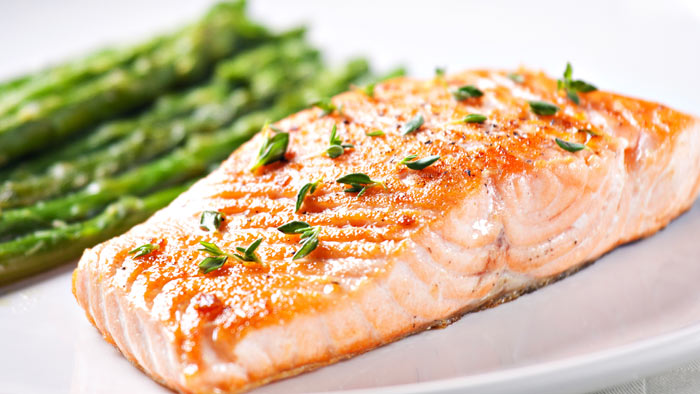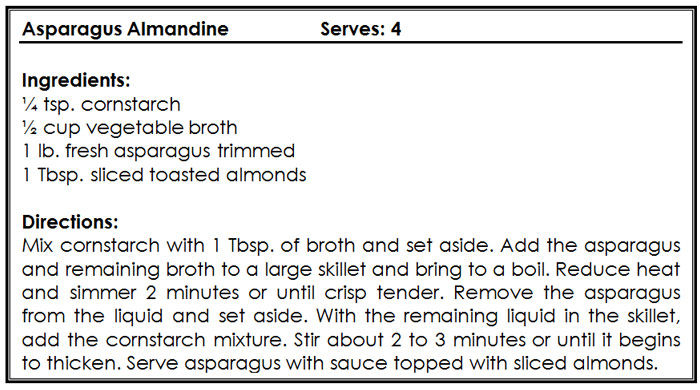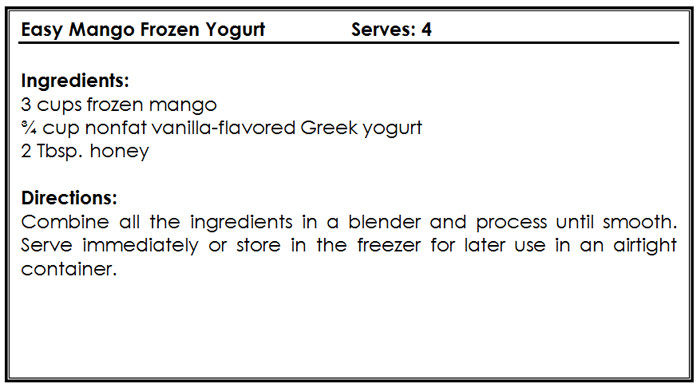
Spring is here and it’s time to trade out the heavier flavors of winter for the lighter fare found during this time of year. Springtime offers the perfect opportunity to enjoy this lighter fare. Traditional holiday meals can be easily transformed into more nutritious dishes with less fat and calories. Coupled with milder temperatures, holiday celebrations can also be a time to gather the family for more outdoor physical activities such as backyard games or evening strolls to complement an overall healthier lifestyle. Take a fresh look at some classic springtime foods to complement Easter and Passover meals with lower fat and calories.

Instead of… Swap for…
Glazed Ham Brown Sugar-Glazed Salmon
Serving (4oz): 200 calories, 8g fat Serving (4oz): 189 calories, 5g fat

At nearly half the fat of more traditional glazed ham, salmon is rich in heart-healthy omega-3 fatty acids, which, according to studies, may prevent heart disease by helping lower blood pressure (Geleijnse, 2002) and triglyceride levels, as well as slow the growth of dangerous artery-clogging plaque (Kris-Etherton, 2003).

Instead of… Swap for…
Green Bean Casserole Asparagus Almandine
Serving (¾ cup): 148 calories, 8g fat Serving (¾ cup): 42 calories, 1.5g fat

Asparagus is a quintessential springtime vegetable that delivers a number of key nutrients, such as iron, fiber and folic acid, which is a particular concern to women of child-bearing age due to its association with healthy fetal development (CDC, 2014).

Instead of… Swap for…
Mango-flavored Ice Cream Easy Mango Frozen Yogurt
Serving (½ cup): 270 cal, 17g fat Serving (½ cup): 125 cal, 0g fat

Mangos are rich in vitamins C, A and B6, as well as potassium and fiber. They are known for their outstanding antioxidant properties, helping our body defend against cell damage (National Mango Board, 2014).
References
United States Department of Agriculture National Nutrient Database for Standard Reference. http://ndb.nal.usda.gov/ndb/foods.
Geleijnse J.M. (2002). Blood pressure response to fish oil supplementation: Metaregression analysis to randomized trials. Journal of Hypertension, 20, 8, 1493-1499.
Kris-Etherton P.M., and Harris, W.S. (2003). Omega-3 fatty acids and cardiovascular disease: New recommendations from the American Heart Association. Arteriosclerosis, Thrombosis and Vascular Biology, 23, 151-152.
Centers for Disease Control and Prevention (2014). Folic Acid. http://www.cdc.gov/ncbddd/folicacid/recommendations.html.
National Mango Board (2014). Get to Know Mangos. http://www.mango.org/mango-nutrition.
 by
by 












 by
by